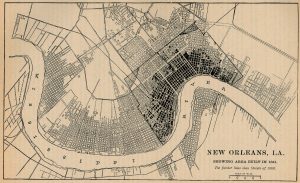 About Us
About Us
As a woman-owned small business, SPARC specializes in Feasibility studies by providing our clients with Existing Conditions technical reports that can be used to evaluate the potential impact of Undertakings on cultural resources during the early stages of project development. This allows state and federal agencies to plan projects that will have the least impacts on historic resources in accordance with their responsibilities under Section 106 of the NHPA and Section 4f of the Department of Transportation Act of 1966 (now codified at 23 U.S.C. 138 and 49 U.S.C. 303).
SPARC also specializes in Phase I Cultural Resources Investigations (archaeological and architectural surveys) as part of the Section 106 process to identify and evaluate historic resources within the Areas of Potential Effect (APE) of a variety of Undertakings. Phase I surveys are undertaken in a manner consistent with the SOI’s “Standards and Guidelines for Archeology and Historic Preservation” (48 FR 44716-44740) or the SOI’s “Standards for the Treatment of Historic Properties” (36 CFR 68) and the guidelines established by the State Historic Preservation Office (SHPO) in each state where work is performed.
By focusing on these two aspects of cultural resource management, SPARC is able to provide clients with quality reports in a timely manner. SPARC understands the scheduling and time-sensitive nature of the various aspects of development projects, particularly those projects that are subject to the environmental screening process through NEPA. SPARC provides not only technical reports with appropriate recommendations tailored to individual projects, but also facilitates consultation among federal, state, and local agencies, project stakeholders, historic preservation groups, and Native American tribes. This facilitation includes, but is not limited to, drafting consultation letters and other Section 106 documents, as needed, and scheduling meetings among interested parties.

New Orleans 1841 “New Orleans, La. Showing Area Built-in 1841. The fainter lines show Streets of 1880.” From Report on the Social Statistics of Cities, Compiled by George E. Waring, Jr., United States. Census Office, Part II, 1886.
